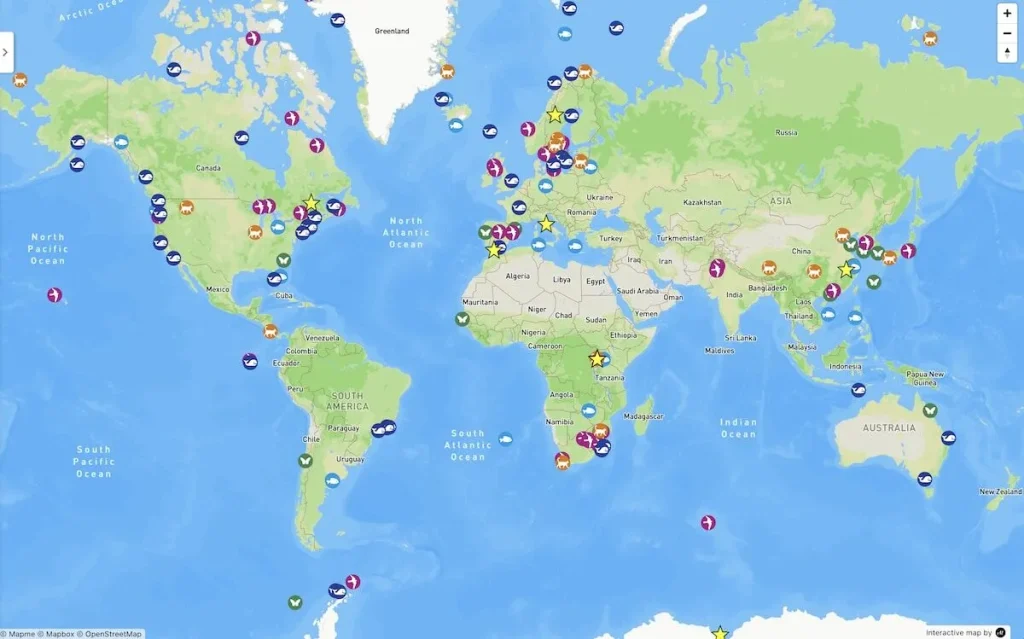California’s farmers have always had a complicated relationship with water. In the state’s Central Valley, where crops like citrus and almonds are grown, water is a lifeline. But recently, a decision by former President Donald Trump to release over 2 billion gallons of irrigation water has caused serious concerns. Despite this, many of the affected farmers, including some of Trump’s most vocal supporters, have remained silent about the issue.
This move, which took place last week, involved the abrupt release of water from reservoirs that many farmers rely on for irrigation. The stated reason for the water release was to help with wildfire fighting in Los Angeles. However, the fires had already been contained by the time the water was dumped, and the water couldn’t even reach Los Angeles in time.
A Nervous Situation for Central Valley Farmers
Zack Stuller, a farmer from California’s Central Valley, expressed his concerns about the decision. Stuller, who owns citrus and almond orchards and uses water from these reservoirs for irrigation, described the situation as “nerve-wracking.” Yet, Stuller, who also serves as the president of the Tulare County Farm Bureau, took the news in stride, saying, “I’m a farmer. I have a conservative mindset. I encourage the trigger-pulling attitude, like, ‘Hey, let’s just get stuff done.’”
But Stuller’s attitude is far from universal. Many farmers are quietly concerned about the future, especially since the Central Valley is already dealing with a dry winter. Local leaders fear the water loss will leave them vulnerable when it comes time to irrigate crops during the hot summer months.
The Irony of Trump’s Water Decision
This decision to release the water is especially ironic because it contradicts Trump’s longstanding criticisms of California’s water policy. For years, Trump attacked California Governor Gavin Newsom for his handling of the state’s water resources, claiming that too much water was being dumped into the Pacific Ocean instead of being used for irrigation.
“I heard the governor say you get 50 gallons,” Trump said during a rally in Bakersfield, California, in 2020. “Fifty gallons is very, very little. Can you imagine a state being rationed when you have millions and millions and millions of gallons being poured out into the Pacific Ocean?”
Despite his previous criticisms of California’s water policy, Trump’s administration decided to release millions of gallons of water at a time when the region is heading into a potential drought. As the winter has been dry so far, local officials worry that the decision could come back to haunt them later in the year.
A Quick Response to Water Release Concerns
When news broke that the Army Corps of Engineers planned to release large amounts of water, local officials acted quickly to prevent a disaster. The Corps initially planned to release even more water than eventually went out, a move that could have flooded farms, damaged maintenance equipment, and even affected homeless encampments along the river. Local officials reached out to Republican congressmembers, hoping they could intervene with the White House to change the plan.
Rep. Vince Fong, a Republican who represents the affected area, spoke briefly about the situation, saying, “We’re excited that we have a president that’s engaged in California water policy and maximizing the coordination of the systems.” However, local water managers like Victor Hernandez were less optimistic, fearing that the releases would damage their ability to store water for later use.
Ultimately, the Army Corps pulled back from its original plan, reducing the water release to one-third of the original amount. The releases eventually stopped altogether by Sunday, but concerns remained about how much water would be left for agriculture later in the year.
The Political Side of California’s Water Crisis
The release of water from the reservoirs was not just a local issue—it became a political one. Farmers in the Central Valley, many of whom have supported Trump in the past, have been silent about this move, possibly due to the complex political dynamics surrounding water management in the state.
In the past, Trump had criticized California’s water policies, positioning himself as an advocate for farmers who were frustrated with environmental restrictions that limited their access to water. But now, the water being released could have long-term effects on local farmers who depend on it for their crops.
As local officials and water experts continue to monitor the situation, many are calling for closer coordination between federal and state authorities to prevent future water mismanagement. The California water system is incredibly complex, with various stakeholders involved, from farmers to environmentalists to local communities. Ensuring that water resources are managed responsibly will be critical as the state moves forward, particularly with the potential for another drought in the coming years.
The Bigger Picture: Environmental Impact
While the immediate concerns are focused on how the water loss will affect farmers, the bigger picture involves balancing the needs of agriculture with environmental concerns. California’s water system has long been a battleground between farmers, environmentalists, and policymakers. Environmental groups argue that much of the water should be used to protect endangered species, like fish in the Delta, while farmers emphasize the importance of having enough water for irrigation during the dry summer months.
Environmental restrictions have become one of the biggest challenges for local farmers, and many feel that these regulations have made it harder to access the water they need. Despite these frustrations, local farmers and their allies are not openly criticizing Trump, possibly due to the political tensions surrounding water policy in California.
Conclusion: A Delicate Situation for California’s Farmers
The water dumping decision highlights the delicate balance California’s farmers must navigate. While some are trying to stay positive, it’s clear that many are concerned about how the situation will affect their livelihoods in the coming months. With the state already facing a dry winter, the release of water at such a critical time has left many wondering how they will manage through the summer.
As the debate continues, one thing is clear: California’s water issues are far from resolved. Whether the state can find a way to balance the needs of its farmers, the environment, and its growing population will be a question that will shape its future for years to come.
Disclaimer – Our editorial team has thoroughly fact-checked this article to ensure its accuracy and eliminate any potential misinformation. We are dedicated to upholding the highest standards of integrity in our content.





More Stories
Trump Dumps Water From Reservoirs Amid Wildfire Crisis
Trump Dumps Water From Reservoirs Amid Wildfire Crisis
Trump Dumps Water From Reservoirs Amid Wildfire Crisis